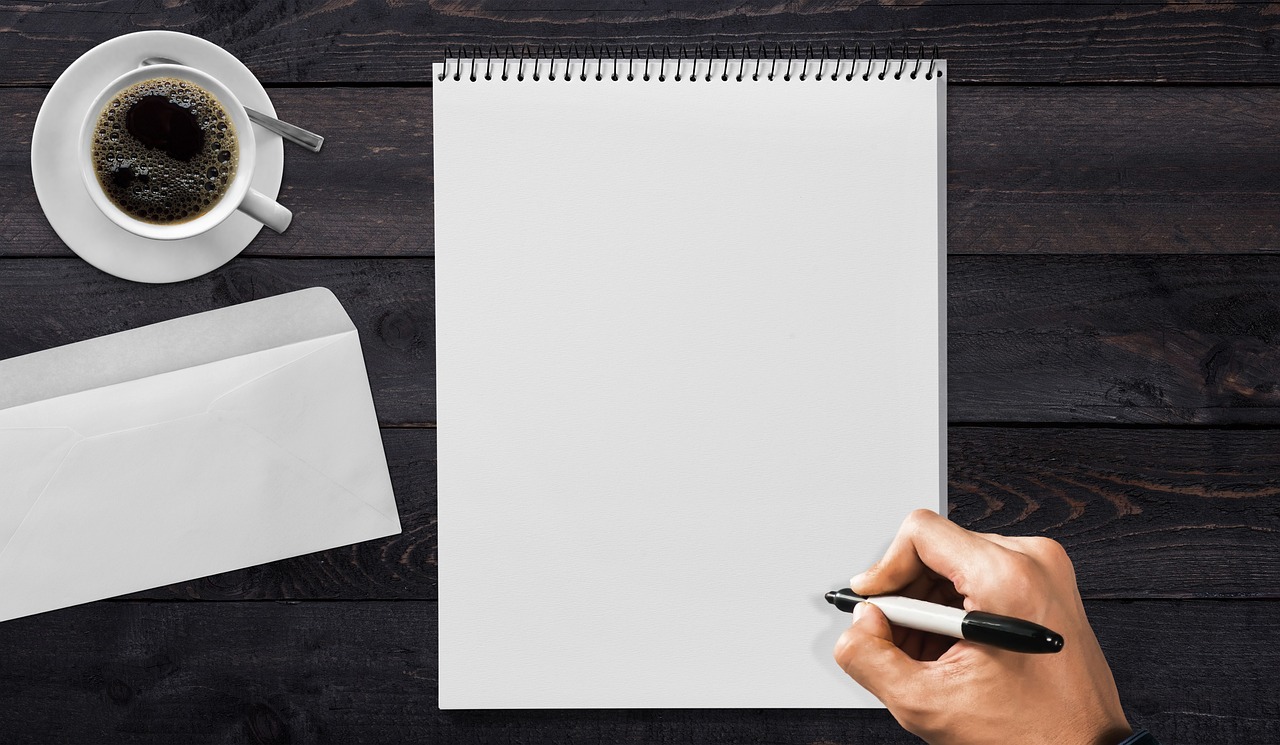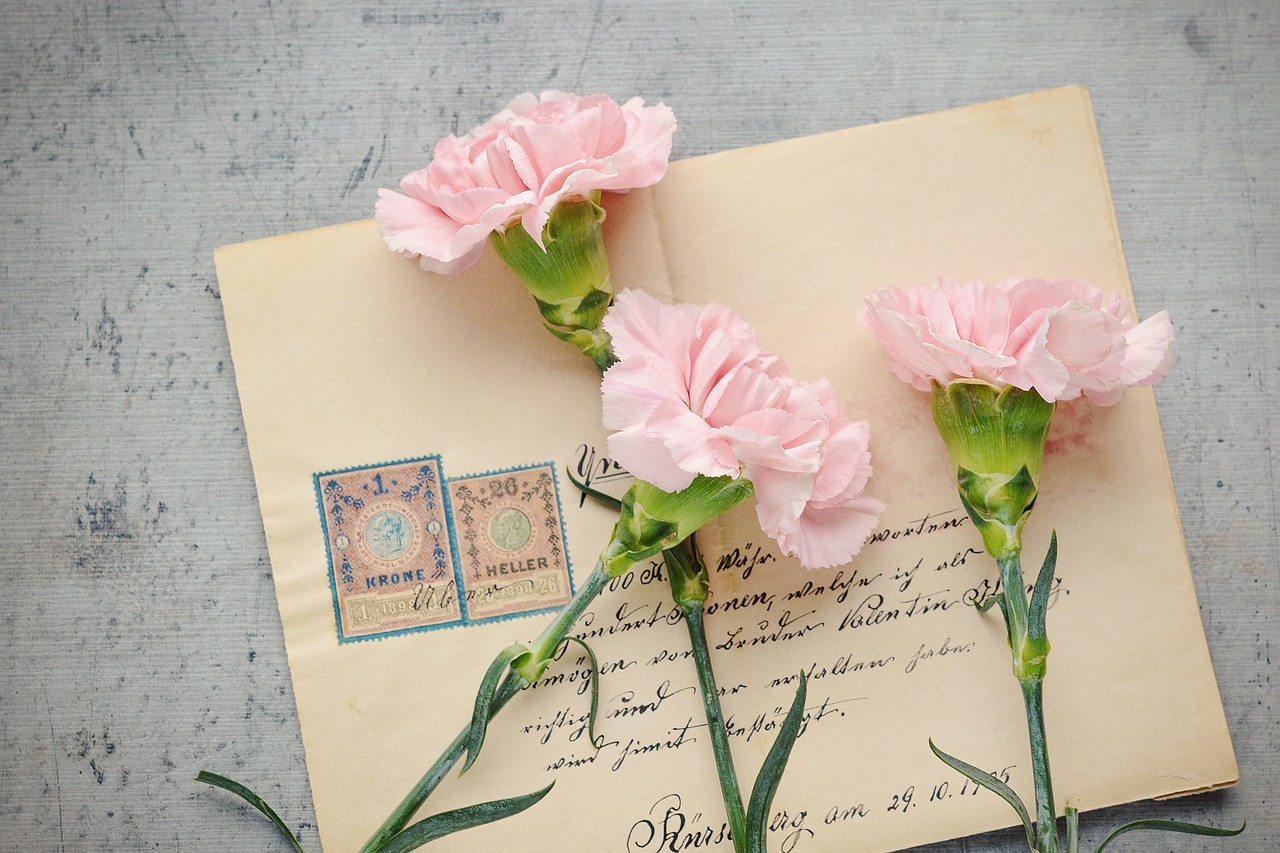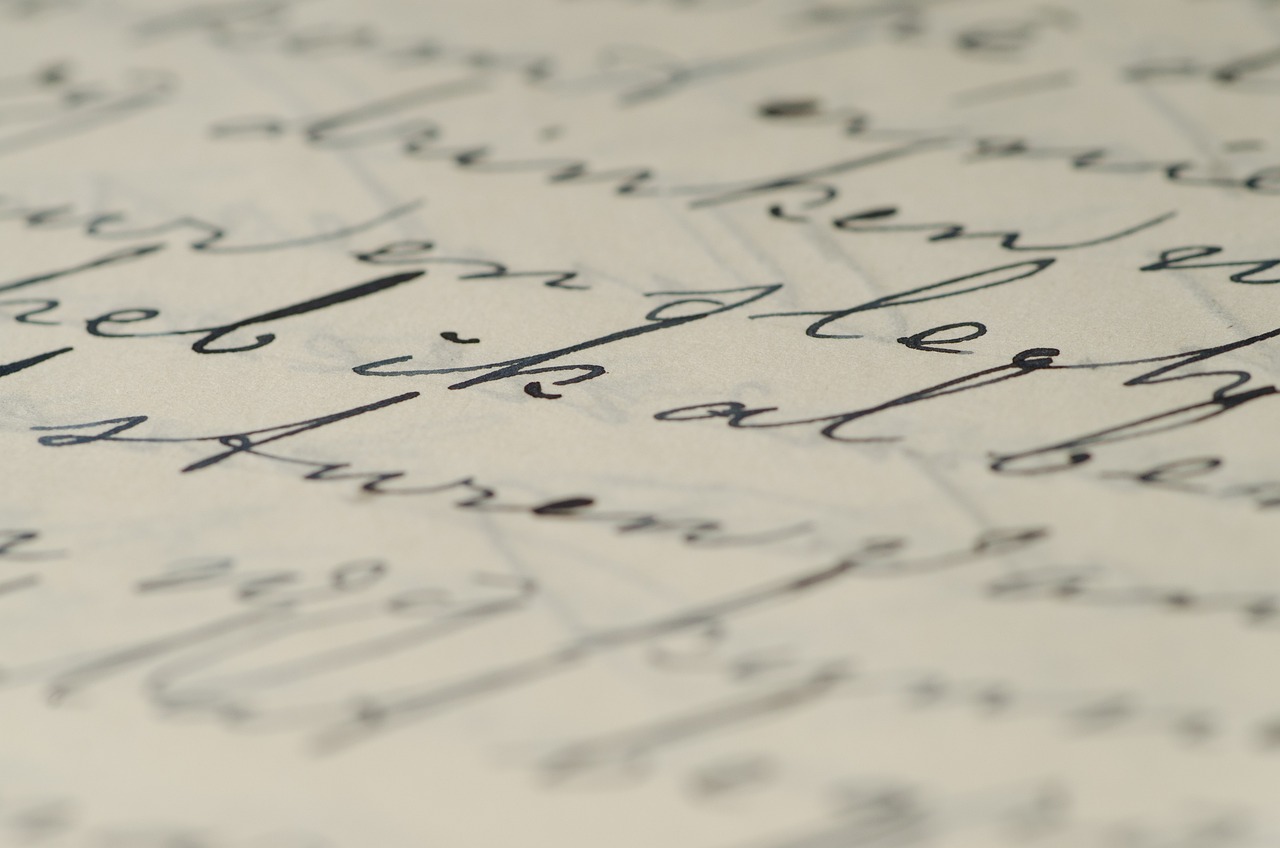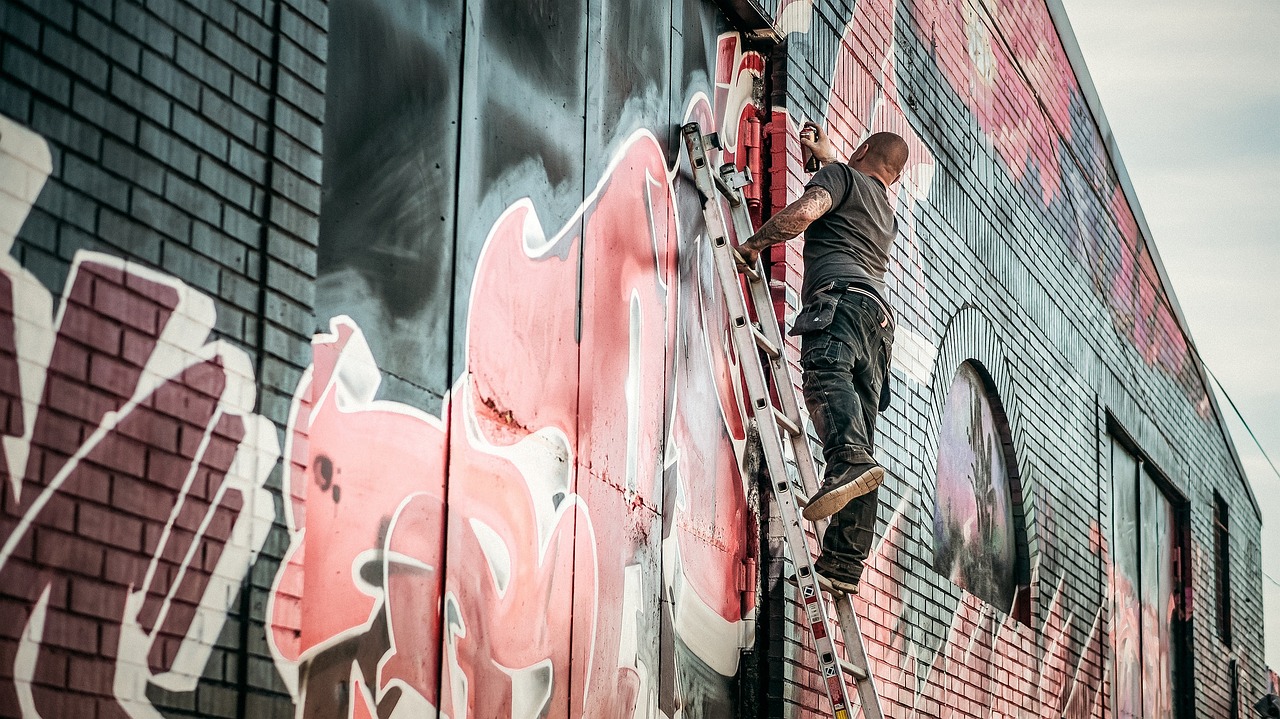5 DIY Hand-Lettering Ideas for Your Walls
Are you ready to transform your living space into a canvas of creativity? Hand-lettering is not just a skill; it's an art form that allows you to express your personality through beautiful typography. Imagine walking into a room where every wall tells a story, where your favorite quotes inspire you daily, and where every glance brings a smile to your face. With just a few DIY hand-lettering projects, you can turn your walls into personalized works of art that reflect who you are. Let’s dive into some exciting ideas that will not only beautify your space but also unleash your inner artist!
Before you dive headfirst into your hand-lettering journey, it's essential to gather the right materials. Think of this as setting up your artist's toolkit. The choices you make here can significantly influence the outcome of your projects. You’ll need to consider various options such as pens, brushes, and surfaces. For instance, if you’re aiming for that classic calligraphy look, a set of brush pens might be your best bet. On the other hand, if you prefer a more modern vibe, fine-liners or gel pens can create clean, crisp lines. Don’t forget about the surfaces! Whether it’s canvas, wood, or even a simple piece of paper, each material will yield a different effect. Here’s a quick table to help you visualize your options:
| Material | Best For | Recommended Tools |
|---|---|---|
| Canvas | Durable wall art | Brush pens, acrylic paint |
| Wood | Rustic decor | Paint markers, wood stain |
| Paper | Practice and sketches | Gel pens, fine-liners |
Now that you have your materials, let’s talk about the techniques that will elevate your hand-lettering game. Mastering the basics is crucial, especially if you're just starting out. Think of hand-lettering as a dance; you need to learn the steps before you can freestyle. Focus on essential skills like strokes, spacing, and consistency. For instance, practice making uniform strokes—this will help you achieve that professional look. Additionally, pay attention to how you space your letters; too close together can look cluttered, while too far apart can feel disjointed. Regular practice will build your confidence and skill level, allowing you to create stunning pieces in no time!
Letter forms are like the different styles of dance in our metaphor. They can drastically change the look of your artwork. From elegant serif fonts to sleek sans-serifs and flowing scripts, each style has its unique flair. Experimenting with these forms will not only enhance your hand-lettering skills but also help you develop your personal style. Imagine combining a bold serif with a delicate script—suddenly, your project is not just lettering; it’s a masterpiece! So, take some time to explore various letter forms and see how they can transform your designs.
Mixing different lettering styles can add an exciting twist to your projects. It’s like creating a fusion dish in cooking—when done right, it’s a delightful surprise! To effectively combine styles, start by choosing two or three that complement each other. For example, pairing a bold sans-serif with a whimsical script can create a dynamic contrast that catches the eye. Just remember to maintain harmony; too many competing styles can make your design feel chaotic. Aim for a cohesive look that still showcases your creativity.
While mixing styles can be fun, maintaining a consistent style throughout your lettering projects is vital. Think of it as your signature—something that makes your work uniquely yours. To develop this consistency, practice writing your chosen styles repeatedly until they feel natural. Consider creating a style guide for yourself, noting down specific characteristics like line thickness, curves, and embellishments. This will not only help you stay uniform across different projects but also build your confidence as a hand-lettering artist.
Just like any other skill, regular practice is key to improving your hand-lettering abilities. Set aside some time each week to practice different techniques and styles. You might find it helpful to follow along with online tutorials or join a local workshop. The more you practice, the more you’ll discover what works best for you. Plus, it’s a fantastic way to unwind and express yourself creatively. Remember, every artist was once a beginner, so don’t be afraid to make mistakes—each one is a stepping stone to mastery!
One of the most powerful ways to personalize your hand-lettering projects is by integrating meaningful quotes or phrases. These words can uplift your spirit and provide motivation every time you walk past them. When choosing quotes, consider what resonates with you. Whether it’s a line from your favorite book or a saying that inspires you, make sure it reflects your personality. Once you’ve selected your text, think about how to design it effectively. Layout, alignment, and embellishments can make a huge difference in how your quote is perceived. A well-placed flourish or decorative element can turn a simple phrase into a stunning focal point on your wall.
Finding quotes that resonate with you is crucial for personalizing your space. Look for phrases that inspire you, make you laugh, or remind you of cherished memories. You can search through books, online quote databases, or even create your own! The key is to choose words that speak to your heart and reflect your values. Once you have a collection, you can rotate them in your designs, keeping your space fresh and inspiring.
Effective text design can make or break your hand-lettering project. Think about the layout—where will your text be placed? Will it be centered, aligned to the left, or perhaps even curved around an object? Alignment plays a crucial role in how your message is received. Additionally, consider embellishments like flourishes, banners, or borders to enhance your design. These little details can add depth and interest, making your hand-lettering stand out even more!
Q: What materials do I need to start hand-lettering?
A: You’ll need pens or brushes, suitable surfaces (like paper, canvas, or wood), and possibly some practice sheets to get started.
Q: How can I improve my hand-lettering skills?
A: Regular practice is key! Follow tutorials, participate in workshops, and don't hesitate to experiment with different styles.
Q: What type of quotes should I use for my projects?
A: Choose quotes that resonate with you personally—whether they inspire, motivate, or simply make you smile!
Q: How do I maintain a consistent style in my lettering?
A: Create a style guide for yourself, practice regularly, and pay attention to the characteristics of the styles you want to use.

Choosing the Right Materials
When it comes to hand-lettering, selecting the right materials is like choosing the perfect ingredients for a gourmet meal. If you want your artwork to shine, you need to invest some thought into what you’ll be using. The tools you choose can greatly influence the outcome of your project, so let’s dive into the essential materials that will help you create stunning pieces for your walls.
First off, let’s talk about writing instruments. The market is flooded with options, but not all pens and brushes are created equal. For beginners, a good set of brush pens can be a game-changer. They are versatile and can create beautiful strokes with varying thicknesses. Brands like Tombow and Pentel offer excellent choices that are easy to use. If you’re feeling adventurous, you might also want to try out calligraphy pens or even gel pens for a different effect. Each type brings its unique flair to your lettering, so don’t hesitate to experiment!
Next up is the surface you’ll be working on. The choice of paper or canvas can significantly impact your lettering experience. Smooth, heavyweight paper is ideal for ink and brush pens, as it prevents bleeding and allows for clean lines. If you’re going for a more rustic look, consider using wood or canvas. These surfaces can add a unique texture that enhances your design. When choosing your surface, think about the final look you want to achieve. Will it be framed, or will it hang directly on the wall? Your decision here can guide your material choices.
Now, let’s not forget about additional tools that can elevate your hand-lettering game. A good ruler and a pencil can help you sketch out your designs before committing to ink. This practice is particularly useful for ensuring that your letters are properly spaced and aligned. You might also want to invest in some erasable pens for easy corrections. And don’t overlook the power of embellishments! Gold leaf, washi tape, and even stickers can add that extra spark to your artwork. They’re like the sprinkles on a cupcake—tiny touches that make a big difference!
To summarize, here’s a quick table of essential materials you might consider:
| Material Type | Recommended Brands |
|---|---|
| Brush Pens | Tombow, Pentel |
| Calligraphy Pens | Speedball, Pilot |
| Paper | Canson, Strathmore |
| Surface | Wood, Canvas |
| Embellishments | Gold Leaf, Washi Tape |
Ultimately, the right materials can make all the difference in your hand-lettering journey. So, take your time to explore and find what resonates with your style and vision. Remember, this is all about expressing yourself and creating something beautiful that you can proudly display on your walls!
- What is the best paper for hand-lettering? Smooth, heavyweight paper is ideal for preventing ink bleed and ensuring clean lines.
- Can I use regular pens for hand-lettering? While regular pens can work, brush pens and calligraphy pens offer more versatility and better results.
- How do I choose the right quotes for my projects? Select quotes that resonate with you personally; they should inspire or motivate you.

Basic Hand-Lettering Techniques
When it comes to hand-lettering, mastering the basics is your first step toward creating stunning artwork that captivates and inspires. Think of hand-lettering as a dance; the more you practice your moves, the more fluid and expressive your performance becomes. So, let’s dive into some essential techniques that will help you develop your skills and bring your creative vision to life!
First off, one of the most critical aspects of hand-lettering is understanding strokes. Each letter is composed of various strokes—some are straight, while others are curved. Start by practicing basic strokes to get a feel for your tools and how they interact with the surface you’re working on. You might find it helpful to create a stroke guide where you can practice different types of strokes, such as:
- Upstrokes: Light and thin
- Downstrokes: Bold and thick
- Curves: Gentle arcs that add flair
Next, let’s talk about spacing. This is where many beginners stumble, but getting it right is essential for creating visually appealing letters. Imagine you’re arranging a bouquet of flowers; if they’re too close together, it looks cluttered, but if they’re too far apart, it feels disconnected. Aim for consistent spacing between letters and lines to ensure your work feels cohesive. A good rule of thumb is to leave a space roughly equal to the height of the letters between each one.
Another key technique is consistency. Whether you’re aiming for a whimsical script or a clean sans-serif, maintaining a consistent style throughout your piece is vital. This doesn’t mean you can’t experiment, but it helps to stick to a particular style for each project. You can achieve this by practicing specific letterforms repeatedly until you feel comfortable with them. Consider creating a style guide that outlines the characteristics of the lettering style you want to achieve, including:
| Letter Type | Characteristics |
|---|---|
| Serif | Has small lines or embellishments at the end of strokes. |
| Sans-Serif | Clean and modern, without the embellishments. |
| Script | Flowing and cursive, mimicking handwriting. |
To further enhance your skills, it’s important to practice regularly. Set aside time each day or week to focus solely on hand-lettering. You can find numerous resources online, including tutorials, videos, and practice sheets that will help you refine your techniques. Remember, even the most skilled artists started as beginners, so don’t get discouraged if you don’t see immediate results!
Finally, don’t forget to have fun! Hand-lettering is an art form that allows for self-expression and creativity. Experiment with colors, styles, and quotes that resonate with you. The more you enjoy the process, the more your skills will improve over time. So grab your pens, unleash your creativity, and watch as your walls transform into personalized masterpieces!
Q: What materials do I need to start hand-lettering?
A: You’ll need some quality pens or brushes, paper or canvas, and possibly a ruler for straight lines. Start simple and build your toolkit as you progress!
Q: How can I improve my consistency in lettering?
A: Practice is key! Consider creating a practice sheet with guidelines for letter sizes and spacing to help you maintain consistency.
Q: Is there a specific style that is easier for beginners?
A: Many beginners find that starting with a simple sans-serif style is easier to master before moving on to more complex scripts.

Understanding Letter Forms
When it comes to hand-lettering, is like having the key to a treasure chest of creativity. Each letter style tells a story and evokes different emotions, making your artwork not just visually appealing but also deeply personal. Think of letter forms as the different personalities of your letters; they can be bold and assertive like a lion, or soft and inviting like a gentle breeze. By mastering these forms, you can transform your walls into a vibrant canvas of expression.
There are several primary categories of letter forms that you should familiarize yourself with:
- Serif: These letters have small lines or decorative strokes at the ends of their main strokes. They often convey a sense of tradition and reliability. Imagine a classic novel; the serif font adds a touch of elegance and sophistication.
- Sans-Serif: As the name suggests, these letters lack the decorative tails of serifs. They are clean, modern, and easy to read, making them perfect for contemporary designs. Think of them as the minimalist friend who keeps things simple yet stylish.
- Script: Script letters mimic cursive handwriting and can add a personal touch to your projects. They often exude warmth and intimacy, making them ideal for quotes and phrases that resonate on a personal level.
- Display: This category includes decorative and artistic letter forms that can be used to grab attention. They are often used for headlines or focal points in your designs, much like a peacock showing off its feathers.
By mixing and matching these styles, you can create a unique visual language that speaks to your audience. For example, combining a bold serif with a playful script can add depth and interest to your lettering. However, it's essential to ensure that the styles complement each other rather than clash, much like a well-balanced meal where each ingredient enhances the overall flavor.
Moreover, understanding how letter forms interact with each other is crucial. Pay attention to spacing and alignment; these elements can drastically affect the readability and aesthetics of your work. For instance, too much space between letters can create a disjointed look, while too little can make your text difficult to read. Striking the right balance is key to achieving that polished finish.
In summary, mastering letter forms is not just about knowing the different styles; it’s about understanding how they can work together to convey your message. So grab your pens and brushes, and let your creativity flow as you explore the fascinating world of hand-lettering!
Q: What are the best materials for beginners in hand-lettering?
A: For beginners, it's best to start with quality markers or brush pens, along with smooth paper that can handle ink well. This combination will help you practice without frustration.
Q: How can I improve my hand-lettering skills?
A: Regular practice is essential. Try to set aside time each day to practice different letter forms and techniques. You can also find online tutorials and join hand-lettering communities for support and inspiration.
Q: Can I use hand-lettering for digital designs?
A: Absolutely! You can scan your hand-lettered pieces and use them in digital designs or create digital lettering using software like Procreate or Adobe Illustrator.

Combining Styles
When it comes to hand-lettering, can be a game changer. Imagine your walls adorned with a beautiful blend of different lettering techniques that not only catch the eye but also tell a story. Mixing styles allows you to create something that feels both unique and personal. For instance, you might pair a bold sans-serif with a delicate script to create a striking contrast that draws attention. Think of it like a delicious recipe where each ingredient brings its own flavor, yet together they create a harmonious dish that’s greater than the sum of its parts.
To effectively combine styles, it’s essential to consider a few key factors:
- Contrast: Look for styles that contrast well with each other. For example, pairing a thick brush script with a thin serif can create an engaging visual dynamic.
- Theme: Ensure that the styles you choose align with the overall theme of your project. If you’re going for a rustic feel, consider using vintage styles that complement each other.
- Hierarchy: Use different styles to create a hierarchy in your lettering. For instance, you can use a bold style for the main message and a more subtle style for the supporting text.
Another tip is to limit the number of styles you combine. Too many styles can make your design feel chaotic rather than cohesive. A good rule of thumb is to stick to two or three styles that complement each other. This way, your design maintains a sense of unity while still showcasing your creativity.
Experimentation is key! Don’t be afraid to play around with different combinations. You might find that a quirky mix of styles creates a vibe that resonates with you. You can even create a mood board to visualize how different styles interact with one another. This can help you see which combinations feel right before committing them to your wall.
Lastly, remember that practice makes perfect. As you continue to explore and combine styles, you’ll develop a better understanding of what works and what doesn’t. So grab your pens and brushes, and let your creativity flow. Your walls are waiting for that unique touch only you can provide!
Q: How do I choose the right styles to combine?
A: Start by considering the mood you want to convey. Look for styles that contrast well while also complementing each other. Experiment with different combinations to find what resonates with you.
Q: Is it okay to mix too many styles?
A: While mixing styles can be fun, it's best to limit yourself to two or three styles to maintain a cohesive look. Too many styles can make your design feel cluttered.
Q: Can I use digital tools to combine styles?
A: Absolutely! Digital tools can be great for experimenting with different styles before you commit to a physical project. Use software to layer and adjust styles until you find the perfect combination.
Q: How can I practice combining styles?
A: Start by creating small projects where you intentionally mix styles. Use quotes, phrases, or even simple words to experiment with different combinations. Over time, you’ll become more comfortable with the process.

Creating a Consistent Style
When embarking on your hand-lettering journey, one of the most important aspects to consider is consistency. Just like a musician must find their unique sound, you too must develop a style that resonates with you and reflects your personality. Consistent style not only makes your work recognizable but also enhances the overall aesthetic of your projects. So, how do you achieve this? It starts with understanding your preferences and sticking to a few core elements.
First, think about the lettering styles you are drawn to. Are you a fan of elegant scripts, or do you prefer bold, block letters? By identifying your favorite styles, you can create a visual identity that is uniquely yours. Once you have a clear idea, practice these styles repeatedly. This repetition will help you develop muscle memory, making it easier to replicate your style across different projects.
Next, consider the color palette you want to use. A consistent color scheme can tie your lettering together beautifully. For instance, if you love pastel colors, stick with shades of pink, mint, and lavender throughout your designs. This not only creates a harmonious look but also allows your artwork to breathe together as a cohesive collection. You might even create a simple table to compare colors you like:
| Color Name | Hex Code |
|---|---|
| Pastel Pink | #FFC0CB |
| Mint Green | #98FF98 |
| Lavender | #E6E6FA |
Another key factor is the spacing and alignment of your letters. Whether you choose to keep your letters close together for a compact look or spaced out for a more airy feel, maintaining this spacing consistently will enhance the readability and overall appearance of your work. Experiment with different alignments—centered, left-aligned, or right-aligned—and choose one that feels right for your style.
Lastly, don't forget about the embellishments. Whether it's flourishes, shadows, or borders, these elements can add depth to your lettering. However, the trick is to use them sparingly and consistently across your projects. Too many variations can lead to a chaotic look, so find a few embellishments you love and use them in each piece.
In summary, creating a consistent style in hand-lettering involves understanding your preferred styles, sticking to a cohesive color palette, maintaining consistent spacing and alignment, and thoughtfully using embellishments. With time and practice, your unique style will shine through, making your hand-lettering projects truly stand out!
- How can I find my unique hand-lettering style? Start by experimenting with different styles and techniques. Keep practicing and pay attention to what feels most natural to you.
- What materials should I use for hand-lettering? You can use a variety of materials, including brush pens, markers, and even paint. Choose what feels comfortable and works with your style.
- How do I improve my hand-lettering skills? Regular practice is key! Try different exercises, follow tutorials, and don't hesitate to seek feedback from fellow artists.

Practicing Your Skills
When it comes to hand-lettering, practice makes perfect. Just like learning to play a musical instrument or mastering a new recipe, the more you engage with your tools and techniques, the more skilled you become. But how do you effectively practice your hand-lettering skills? Well, it's all about consistency and variety. Start by setting aside some time each day to doodle or create simple letters. You don't need to carve out hours; even 15-20 minutes can yield impressive results over time. Think of it as a workout for your creativity!
One effective way to practice is by using workbooks or printable templates. These resources often provide structured exercises that guide you through various strokes and styles, making it easier to see your progress. You can find a plethora of free resources online, or you can create your own templates by tracing over letters or quotes you admire. This not only helps in improving your technique but also gives you a chance to experiment with different styles.
Another technique is to keep a sketchbook dedicated solely to hand-lettering. This becomes your personal playground where you can freely explore different ideas, styles, and quotes. You might want to include sections for different types of lettering, such as serif, sans-serif, and script, so you can track your growth in various areas. Plus, when you look back at your earlier pages, you’ll be amazed at how far you've come!
Additionally, consider joining a community, whether online or in-person. Engaging with fellow hand-lettering enthusiasts can provide you with valuable feedback and motivation. You can share your work, receive constructive criticism, and even collaborate on projects. Social media platforms like Instagram and Pinterest are great for finding inspiration and connecting with others who share your passion. You could even start a challenge, such as a 30-day lettering challenge, to keep your skills sharp and your creativity flowing.
Lastly, don't forget to document your progress. Take photos of your work at different stages and note what techniques you used. This not only helps you see your improvement but also allows you to identify areas that need more focus. Remember, the journey of mastering hand-lettering is just as rewarding as the destination, so enjoy each stroke of your pen!
- How often should I practice hand-lettering?
It's recommended to practice at least a few times a week to see steady improvement. Even short sessions can be beneficial. - What materials do I need to start practicing?
You can start with basic tools like pencils, pens, and paper. As you progress, you might want to invest in specialized hand-lettering supplies. - Are there any online resources for hand-lettering practice?
Yes! Websites like Pinterest and Instagram have countless tutorials, worksheets, and videos to help you improve your skills. - Can I practice hand-lettering digitally?
Absolutely! There are many apps and software available that allow you to practice hand-lettering on tablets or computers.

Incorporating Quotes and Phrases
Integrating meaningful quotes or phrases into your hand-lettering projects can truly elevate the aesthetic of your walls. Imagine walking into a room where inspiring words greet you, setting the tone for creativity and positivity. The right quote can transform a dull space into a vibrant sanctuary that reflects your personality and values. But how do you choose the perfect text that not only resonates with you but also complements your design?
First off, it's essential to select quotes that have a personal significance. Think about phrases that motivate you, remind you of cherished memories, or simply make you feel good. Whether it's a line from your favorite book, a lyric from a song that moves you, or a quote from a respected figure, the words should evoke emotions that resonate deeply within you.
Once you have your quotes in mind, the next step is to consider how to design them effectively. The layout, alignment, and embellishments you choose can make a world of difference. For instance, a quote that is centered and framed with decorative elements can create a focal point in a room. On the other hand, a staggered arrangement can add a playful touch. Here are some tips to keep in mind:
- Font Choice: Select fonts that match the mood of the quote. A whimsical script might work well for a light-hearted phrase, while a bold sans-serif could suit a powerful statement.
- Color Palette: Use colors that harmonize with your existing décor. A monochromatic scheme can create a sleek look, while contrasting colors can make your text pop.
- Size Matters: Consider the scale of your lettering. Larger quotes can serve as a statement piece, while smaller phrases can be integrated into a gallery wall.
Additionally, don't shy away from adding personal touches. Incorporate small illustrations or decorative elements that relate to the quote. For example, if your quote is about adventure, you might add hand-drawn mountains or a compass. These little details not only enhance the design but also make it uniquely yours.
Another effective strategy is to create a theme with your quotes. For instance, you could dedicate a wall to motivational quotes, or perhaps a corner of your home could feature phrases about love and family. This thematic approach not only unifies your design but also creates a narrative that speaks to anyone who enters your space.
In summary, incorporating quotes and phrases into your hand-lettering projects is a fantastic way to personalize your walls. By selecting meaningful text, designing it thoughtfully, and adding unique embellishments, you can create an inspiring environment that reflects your identity and encourages positivity. So, grab your pens and brushes, and start turning your walls into a canvas of inspiration!

Choosing the Right Quotes
When it comes to hand-lettering your walls, the choice of quotes can truly make or break the overall vibe of your space. You want to select quotes that not only resonate with you but also inspire those who enter your home. Think of it as choosing the soundtrack to your life—each quote should evoke a feeling, a memory, or a spark of motivation. So, how do you find that perfect quote? Here are some tips to guide you:
First, consider your personal values and experiences. What themes or messages do you want to surround yourself with? Whether it’s love, adventure, or resilience, the right quote should reflect your core beliefs. For instance, if you’re a fan of adventure, a quote like “Not all who wander are lost” by J.R.R. Tolkien could be a great choice. It not only adds character to your wall but also serves as a reminder to embrace exploration.
Next, think about the mood you want to create in each room. A cozy reading nook might benefit from a comforting quote, while a workspace could use something motivational. Here’s a quick rundown of how different quotes can set the tone:
| Room | Quote Type | Example |
|---|---|---|
| Living Room | Inspirational | "Home is where the heart is." |
| Kitchen | Fun | "Good food, good mood." |
| Bedroom | Affirmational | "You are enough." |
| Workspace | Motivational | "Dream big, work hard." |
Additionally, don’t shy away from using quotes from your favorite books, movies, or songs. These can be particularly powerful because they carry personal significance. If you’re a fan of a specific author, for example, you might choose a quote that encapsulates their philosophy. Just remember, the more personal the quote, the more it will resonate with you and your guests.
Lastly, consider the visual aspect of the quote. Not every quote will lend itself to beautiful hand-lettering. Some phrases may be too long or complex, making them challenging to execute artistically. Aim for quotes that are concise yet impactful. Think of quotes as the cherries on top of your hand-lettering sundae. They should enhance the overall design without overwhelming it. So, when you’re browsing for quotes, keep an eye out for those that strike a balance between meaning and visual appeal.
In summary, choosing the right quotes for your hand-lettering projects is about more than just aesthetics; it’s about creating a space that reflects your personality and inspires those who enter it. Take your time to explore various sources, jot down quotes that resonate with you, and don’t hesitate to mix and match until you find the perfect fit for your walls. Remember, your walls are a canvas for your thoughts and feelings—make them count!
- Where can I find good quotes for hand-lettering? You can find quotes in books, online quote databases, or even by creating your own based on personal experiences.
- How do I choose a quote that fits my decor style? Consider the colors, themes, and overall mood of your space. A quote should complement, not clash, with your decor.
- Can I use longer quotes for hand-lettering? While longer quotes can be beautiful, they may require more space and careful planning to ensure they are legible and visually appealing.

Designing with Text
When it comes to hand-lettering, the way you design with text can truly make or break your project. Think of your wall as a blank canvas, waiting to be transformed into something spectacular. The arrangement, alignment, and embellishments you choose can elevate your art from ordinary to extraordinary. So, how do you ensure your text design captivates the eye and resonates with the heart? Let’s dive into some essential tips and tricks!
First off, layout is crucial. You want your lettering to flow naturally across the surface. Consider using a grid system or sketching out your design lightly with a pencil before you commit with ink. This approach allows you to play around with different arrangements without the pressure of permanence. For example, you might want to center a quote, or perhaps stagger the lines for a more dynamic feel. Remember, the goal is to create a visual rhythm that draws the viewer in.
Next, think about alignment. Are you going for a left-aligned, right-aligned, or centered look? Each choice conveys a different vibe. Left alignment can feel more structured and formal, while a centered alignment often feels more balanced and harmonious. If you’re feeling adventurous, why not mix it up? For instance, you could center your main quote and left-align any additional commentary or context. Just be wary of clutter; too many competing alignments can confuse the eye.
Now, let’s talk about embellishments. This is where your personality can really shine through! Adding decorative elements like flourishes, borders, or even small illustrations can enhance your lettering and make it pop. Just be careful not to overdo it. Think of embellishments as the seasoning in your favorite dish; a little can elevate the flavor, but too much can overwhelm it. For instance, if your main text is bold and striking, consider using delicate flourishes that complement rather than compete.
Finally, don’t forget about color. The color palette you choose can dramatically affect the mood of your design. Soft pastels can create a calming atmosphere, while vibrant hues can inject energy and excitement. When selecting colors, think about the overall vibe you want to convey. If you’re using multiple colors, consider using a color wheel to find complementary shades that work well together. A well-thought-out color scheme can unify your design and make it visually appealing.
To sum it all up, designing with text is about finding that perfect balance between creativity and clarity. By paying attention to layout, alignment, embellishments, and color, you can create a stunning hand-lettering piece that not only looks amazing but also speaks to your personal style. So grab your tools, unleash your creativity, and let your walls tell a story!
- What materials do I need for hand-lettering? You’ll need good quality pens or brushes, paper or a suitable surface, and possibly some embellishments like washi tape or stencils.
- How can I improve my hand-lettering skills? Regular practice is key! Try different styles, take online classes, or join a local workshop.
- Can I use any quote for my hand-lettering project? Yes, but it’s best to choose quotes that resonate with you personally or suit the space you’re decorating.
- What’s the best way to plan my design? Sketching out your design with a pencil first can help you visualize layout and alignment before committing with ink.
Frequently Asked Questions
- What materials do I need for hand-lettering?
To get started with hand-lettering, you’ll need some basic materials. This includes a variety of pens and brushes, like brush pens for those smooth strokes and fine liners for detailed work. Don't forget to choose the right paper or surface—something that can handle ink without bleeding. Experimenting with different materials can lead to exciting results!
- How can I improve my hand-lettering skills?
Improving your hand-lettering skills takes practice and patience. Start by mastering basic strokes and letter forms. Regularly practicing different styles will help you gain consistency and confidence. You can also find online tutorials or join local workshops to learn from others and get constructive feedback.
- What types of quotes work best for hand-lettering projects?
When selecting quotes for your projects, choose ones that resonate with you personally. Inspirational quotes, song lyrics, or even meaningful phrases from books can add a special touch to your walls. Make sure the quote is not too long, as it should fit well within your design while remaining legible.
- How do I combine different lettering styles effectively?
Combining different lettering styles can create a unique aesthetic! Start by choosing a primary style, like a bold script, and then add in complementary styles, such as a clean sans-serif for contrast. Make sure to maintain balance and harmony in your design by not overcrowding it with too many styles.
- What should I consider when designing the layout for my lettering?
Layout is crucial in hand-lettering! Consider the flow of your text—how it moves across the space. Pay attention to alignment, spacing, and how elements interact with each other. Adding embellishments like borders or illustrations can enhance your design, but keep it cohesive and not overly busy.



















